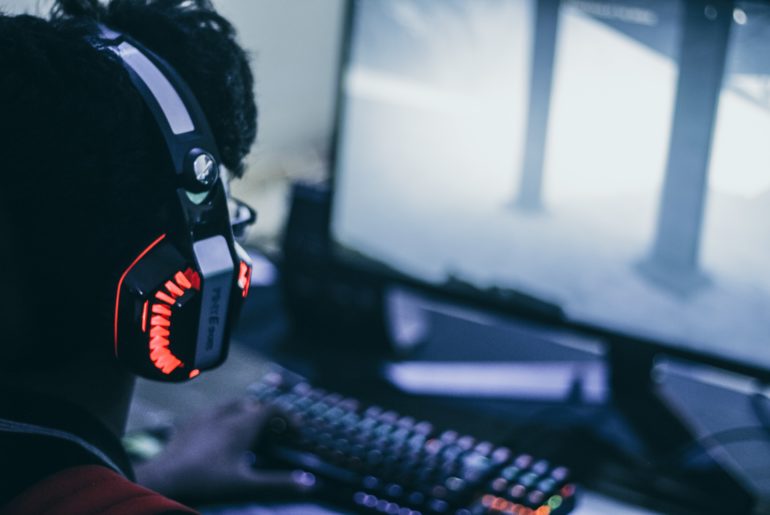According to Super Data, video games generated $119.6 billion in revenue during 2018, another sources forecast that by 2025 industry would be over $300 billion in revenue. This fact and that there are over 2.5 billion gamers around the world let you know how big and fast growing this industry is. Video games are more than just a booming entertainment business; they are reshaping the way we interact with the world. The gaming industry inspires innovation by constantly pushing the boundaries of what is possible, driving companies to serve the billions of gamers around the world. This growth in the industry is also supported by the investment being made, which can sometimes exceed $265 million, as was the case of Grand Theft Auto V, the most expensive video game ever developed.
These high investments need legal support the protection of the work that has been done over the years and, at the same time, increase the value of the company’s intangible portfolio, strengthening its position in the sector.
A video game, as a finished product, comprises, among other elements, software, music, video, images, characters, designs, trademarks and scripts. It is in the multitude of elements that comprise video games that create an environment of complexity in which the protection of our intangible assets becomes of paramount importance. In addition to this complexity, some of them may be subject to different, in some cases dual, protection. For this reason, it is highly recommendable to design a global Intellectual Property (‘IP’) protection strategy that evaluates in detail which elements shall be protected and analyses the specific risks.
For all the above reasons, in a constantly growing industry and has already surpassed movie industry, videogames producers constantly adapt and reinvent their offering, leading to new manners to communicate, innovate, create, present themselves in the market and configure their products and services. This is why the positioning of our brands and the corresponding and timely protection under the rules of IP is essential to obtain competitive advantages. Focusing on trade mark and design legislation, from an European Union perspective, it becomes necessary to assess, in particular, which legal mechanisms may assist video game industry companies and other stakeholders to protect their ‘look and feel’.
In this vein, new gaming business models make necessary not only to focus on the protection of traditional trademarks and industrial designs such as the name of the game or the company, but think outside of the box and: (i) properly use available legal mechanisms to protect our company reputation, the appearance of our products and the connection between our products and services and the company; and (ii) make sure the interaction between different stakeholders and the use of intellectual property assets are properly regulated considering the extraordinary increase of in-game advertising, around-game advertising, and ‘advergaming’.
In order to achieve this, some aspects may be specially important, such as:
1. Design or recalibrate our IP Strategy and, in particular, the Intellectual Property Rights licensing approach
As previously highlighted, many videogames elements and features may be protected, from the shape of the hardware, until the script therein. Focusing on trade mark and design law, brand protection becomes a fundamental factor in order to increase the value of our company.
In particular, putting in place a balanced IP strategy, allows companies to know what can they protect, how to do it and for how long. This strategy may help companies to evaluate its positioning vis-à-vis other market players, protect its intangible assets and, as a general rule, prevent others from using its intangible assets through online and offline enforcement.
However, thinking that one company will be able to exploit intangible assets alone is, in most scenarios, impossible due to the normal interaction of different stakeholders within the market. In this context, bearing a coherent approach towards licensing becomes fundamental.
2. Evaluating the protection of different elements of the video game under trade mark law
Although traditional trademarks seem not to be fashionable anymore, they continue to be extremely important to effectively protect our brand in the market, in particular considering the rise of online gaming. This, connected to the fact that it is a very dynamic industry where lots of new signs are created in line with the preferences of the users, makes necessary a review of the company’s IP strategy.
In this line, a careful analysis of the protection of the signs, the convenience to register the same, the filing strategy and the portfolio management are, without doubt, points to be closely followed. The proper use of non-conventional signs, as 3D and multimedia trademarks, also play an important role, considering the new manners to communicate both, in the online and offline environments.
Finally to consider whether some videogames characters or elements are, or have acquired, enough distinctiveness in order to be protected under the above mentioned regime, make help us to longer protect certain features or signs.
3. Evaluate the protection of different elements of the video game under design law
The protection of the appearance of the product, either through national designs, European Union registered design or the European Union non-registered design, is not, sometimes, explored as much as possible, therefore not extracting the full potential the current legal framework provides to companies in the videogame industry.
In this sense, it is convenient to make a careful study on the likelihood to protect the appearance of certain elements inside and outside the videogame environment. For instance, some items to look at would be hardware elements, the shape of consoles, animated characters, type fonts or Graphical User Interfaces.
4. Assess whether our Intellectual Property is in line with the company marketing strategy and merchandising initiatives
As an important aspect of the IP strategy, making sure that marketing and legal departments are on the same page is crucial in order to ensure the proper use of our intangible assets, which ultimately brings an increase in the value of the company. The potential emergence of copycats, undesired parallel imports and the distribution through non-appropriate channels are important issues to take into account when analyzing such initiatives.
Of course, such analysis has to be conducted considering relevant local legislations and, where applicable, European Union legal framework in order to gather an overall perspective of the IP protection and services that, partially due to technology development, can be globally provided.



